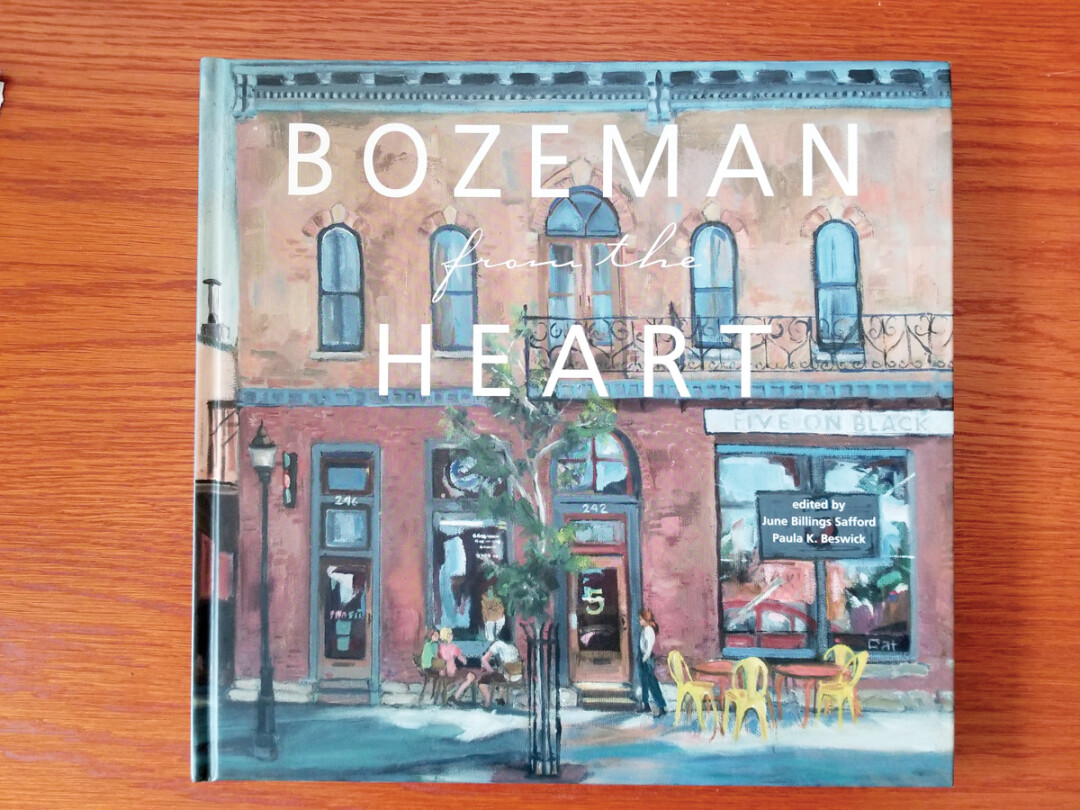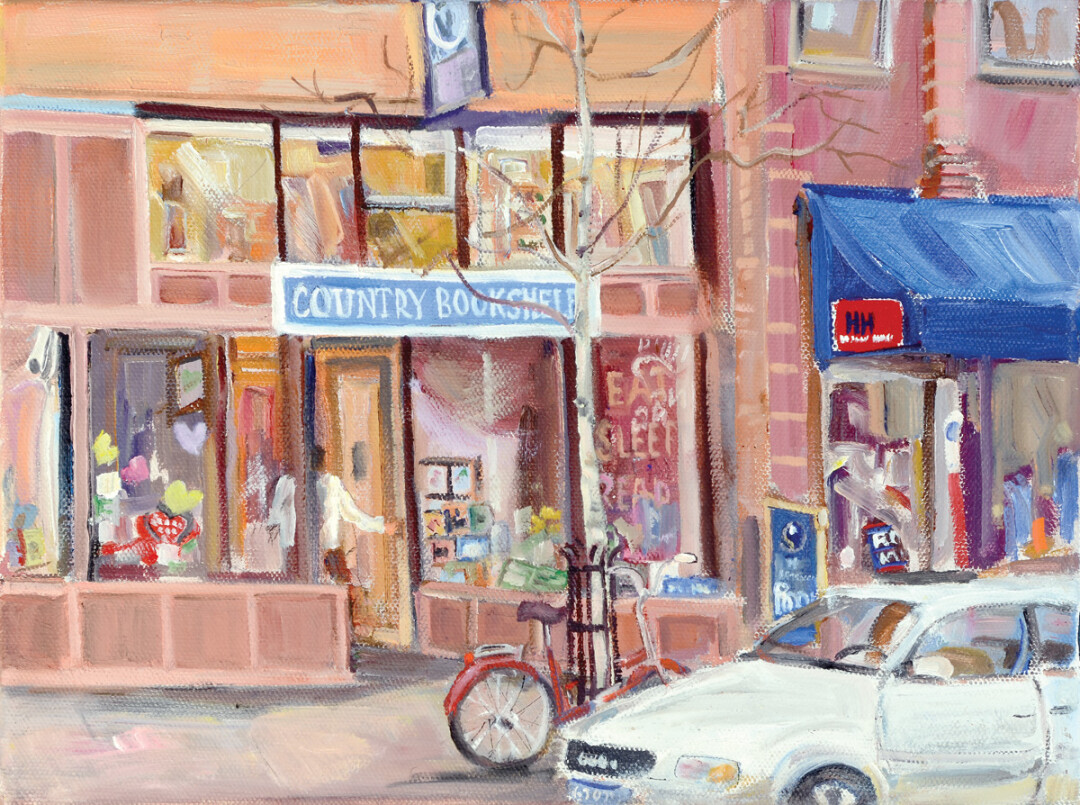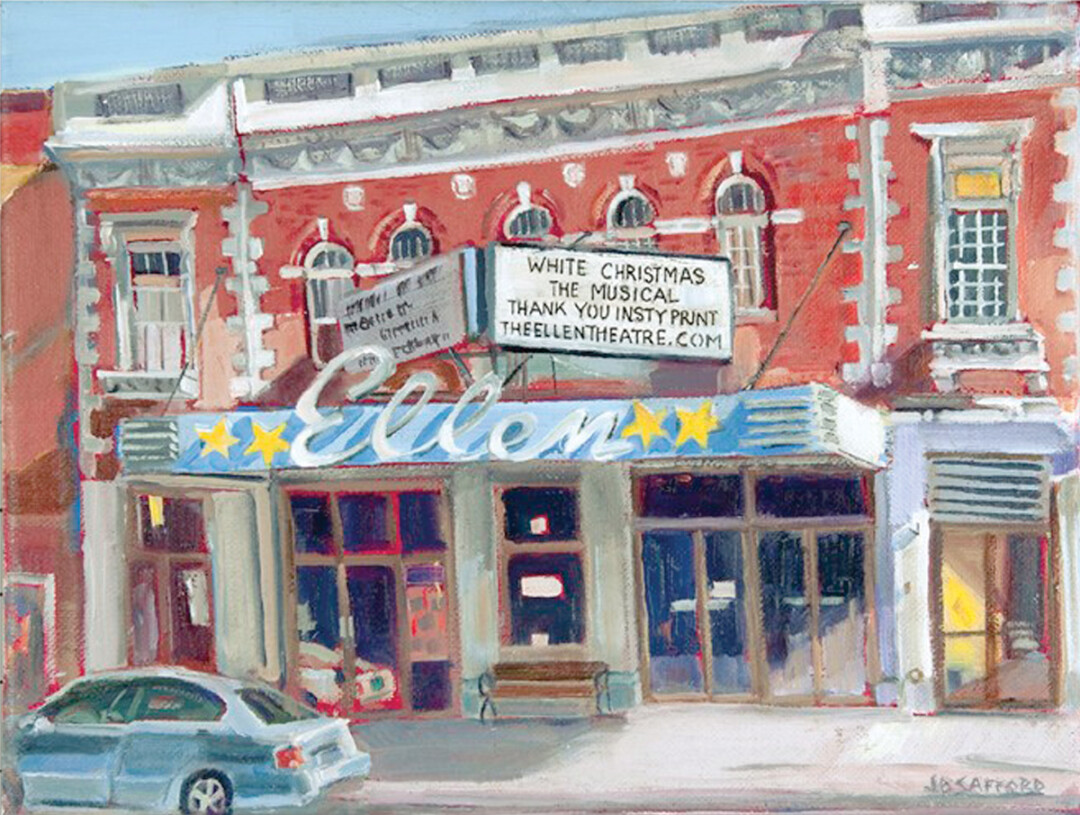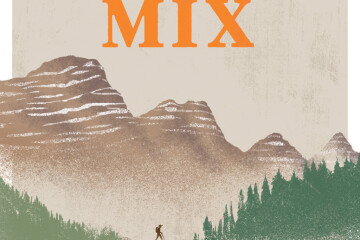Bozeman from the Heart

To open a book is to enter a conversation. If it’s fiction, the reader becomes a character, reacting to the behaviors and thoughts of those whose world she has been introduced to. If it’s nonfiction, she enters a dialogue with the writer who presents his perception on some aspect of life.
But to open Bozeman from the Heart, edited by June Billings Safford and Paula Beswick, is to enter a conversation that resembles the content murmurs of friends meeting in coffee houses or encountering each other by surprise on a corner of Main Street Bozeman. As you walk through the pages, you can’t help but stop to talk with one or several of the 25 contributors in front of the downtown buildings Safford has painted and that appear throughout the book. Pause at the Ellen, and there’s John Ludin, elemental in saving the theatre, talking about its history and its importance. As you stroll east down Main Street, there’s Plonk, its door open, and you can chat with Eric Funk about the role the arts (especially music) have played in shaping Bozeman’s outlook before you go in for a glass of wine. Cross to the south side of the street and wander the other direction, to the Country Bookshelf, where someone is just entering the door, and there’s Valerie Hemingway, eager to tell you about how the indie book store has been the literary heart of Bozeman since 1957. In short, in this book you don’t walk; you meander, and you have conversations. This slow pace, Safford hopes, will make readers want to talk about what identity Bozeman, the fastest growing city in Montana, can or will assume. “It’s a book about a town,” she explains. “The main character is Bozeman. It’s at a crossroads, and there’s an unease about where the town is going.” 
Just as Bozeman from the Heart engenders conversation, Safford says it is conversation that engendered the book. A poet and a painter, Safford always imagined combining poems with images, preferably of the human form. But in 2009, after the gas explosion on Main Street that destroyed the I.O.O.F. building, Safford came upon a photo that she had taken of it because it was, as Safford explains, “just a beautiful brick building.” And, she said, if you look at downtown Bozeman, you notice that there are many beautiful brick buildings whose adorned upper stories and fascias are often unseen by citizens in a hurry. “I thought ahead to the possibility that other charming architecture could disappear and be replaced by something much less distinctive, and so I painted for the beauty,” building after building. As she painted over the years, she noticed that the face of Bozeman changed in other ways: businesses changed hands or disappeared. “No more Helle Hansen, no more Insty Print, soon-to-be no more Straightaway Motors in that same place, no more barber shop alongside the Western Café, just to name a few,” she said. She realized what she had been doing was archival—recording a town as it once was. With much of Main Street painted, Safford had a show of her work in the Atrium Gallery of Bozeman Public Library. Painter Susan Blackwood saw her work there, and a conversation ensued; Blackwood told her, “These are historic paintings; you should do a book.”
But how?
It took Safford a year-and-a-half to figure out the answer to that question. Looking at her work, she understood that her painting the buildings was not to merely record history, to archive Bozeman; rather, it was a way to articulate ideas of community. Believing that her art work alone could not accomplish this purpose, she sought out the help of writers. It meant entering conversations with lots of people, as Bozeman has lots of writers, many of whom Safford didn’t know. Nevertheless, she forged ahead, telling them about her vision and asking if they would write pieces about what it means to live in Bozeman; these narratives would be accompanied by Safford’s paintings. To her delight, no one turned her down.
By mid 2017, with writers on board and the book moving forward, Safford pegged Paula Beswick, who was the director of the Bozeman Public Library Foundation, as co-editor. And then she asked Stephanie Newman to come on board as graphic designer. As Newman designed the layout, Safford and Beswick tackled the task of finding the funds necessary to publish. Many of the businesses and foundations they approached were excited by the purpose of the book—to engender conversation about a town’s identity—and contributed.
By December of 2018, Bozeman from the Heart was printed and ready for distribution, just in time for Christmas. It has been warmly received. Safford says this is because so many people—both longtime residents and newcomers to the community—are interested in Bozeman’s future. Her hope is that the book will get citizens conversing with one another about what that future is. Sharing her concern, downtown businesses not only contributed to the book’s publication, but downtown venues have gladly offered their space to promote it. On January 30, more than a hundred people turned out at the Country Bookshelf to listen to and talk with Safford, Beswick and several contributors who told their stories. On February 11, the Ellen Theatre opened its doors for free to a night of what was titled “A Valentine for this Town,” consisting of a joyful mix of music and readings. On February 22, the Old Main Gallery exhibited Safford’s paintings—an exuberant one-night show.
Most important to Safford, however, is the evening of March 7. The Baxter Hotel has loaned its ballroom, where she hopes a large audience from the community—one made of established residents and newcomers, of the young and old—will gather at 7 p.m. to share stories about how their lives entwine with the life of this town. She hopes readers will tell how particular narratives in Bozeman from the Heart fired a nerve of memory and took them back in time and to a place. But, mostly, she hopes the stories will encourage citizens to think about the town’s future: What is essential? What is worth saving? How can we do this? Simply, she wants to start a conversation, one that is larger than one reader entering one book. For Safford, Bozeman from the Heart is a means to transcend the daily busyness of communication we default to in a quickly changing community. Rather, it encourages us to slow our pace, look up from our daily routines, and have some fun talking with one another.
Glen Chamberlain has won a Pushcart Prize, the Gilcrease Prize for fiction, and the Rona Jaffe Award for both fiction and creative nonfiction. Her first collection of short stories, Conjugations of the Verb ‘To Be’, won a Montana Book Award. Her second collection, All I want Is What You’ve Got, was a finalist for the High Plains Book Award.
